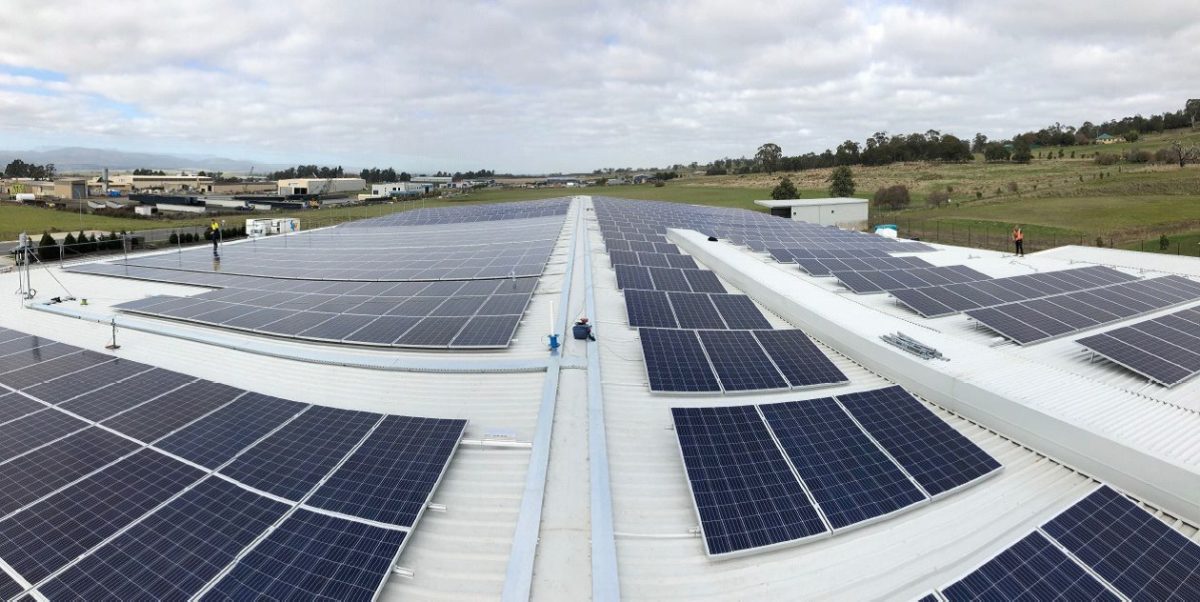As part of its Tasmania First Energy Policy, the Tasmanian government is looking to adjust the FIT scheme as it seeks to achieve lowest regulated electricity prices in Australia, and to make the island state 100% self-sufficient in renewable energy by 2022.
Currently, small-scale systems installed after 30 August 2013 are entitled to the 8.5 c/kWh FiT rate, with the results of the review to be implemented by January 1, 2019.
As confirmed by Minister for Energy Guy Bernett, the FiT changes will not affect large commercial installations.
“Large commercial customers won’t be directly impacted by any changes to the FiT rate because their pricing arrangements are negotiated on a commercial basis, and their prices are not regulated by the Office of the Tasmanian Economic Regulator (OTTER),” said Bernett welcoming the inauguration of one of the biggest commercial solar PV projects in the state.
The new project is a 831kW solar system owned by SRT Logistics, a Tasmanian-owned transport company, and deliver in partnership with Tasmanian government-owned electricity retailer Aurora Energy and Melbourne-based renewable energy developer Beon Energy Solutions.
It comprises a total of 2,546 solar panels mounted across two distribution centers in Launceston and Devonport, which will generate over 1 million kWhs per year, or the equivalent of powering the equivalent of 143 homes.
The new solar array is custom-designed for the specific electricity requirements of SRT Logistics, and is expected to reduce the company’s energy costs by up to 50%.
Meanwhile, utility-scale solar development in Tasmania is also building up momentum this year.
The state’s largest solar farm was given the green light in May, as the Latrobe Council granted planning approval for the 12.5 MW Wesley Solar Farm in the state’s north west.
With construction set to begin in 2019, the solar PV farm, which may include energy storage in the future, will be developed by Australian renewables company Epuron.
Epuron is also building another smaller project in north east Tasmania – the 5 MW George Town Solar, which is poised to be the island state’s first utility-scale solar project.
“We believe Tasmania is in a unique position to become the renewable energy battery of the nation, and we have a plan to make this a reality,“ added Barnett, drawing attention to the state’s big storage ambitions proved to be well grounded.
A blueprint backed by an ARENA grant of $500,000 as part of the $2.5 million in funding made available for the Battery of the Nation Project released by Hydro Tasmania in June confirmed 4,800 MW of storage capacity at existing reservoirs across Tasmania, thus showing that the state can play a significant role in the transformation of the National Electricity Market (NEM) over the next two decades.
This content is protected by copyright and may not be reused. If you want to cooperate with us and would like to reuse some of our content, please contact: editors@pv-magazine.com.









By submitting this form you agree to pv magazine using your data for the purposes of publishing your comment.
Your personal data will only be disclosed or otherwise transmitted to third parties for the purposes of spam filtering or if this is necessary for technical maintenance of the website. Any other transfer to third parties will not take place unless this is justified on the basis of applicable data protection regulations or if pv magazine is legally obliged to do so.
You may revoke this consent at any time with effect for the future, in which case your personal data will be deleted immediately. Otherwise, your data will be deleted if pv magazine has processed your request or the purpose of data storage is fulfilled.
Further information on data privacy can be found in our Data Protection Policy.